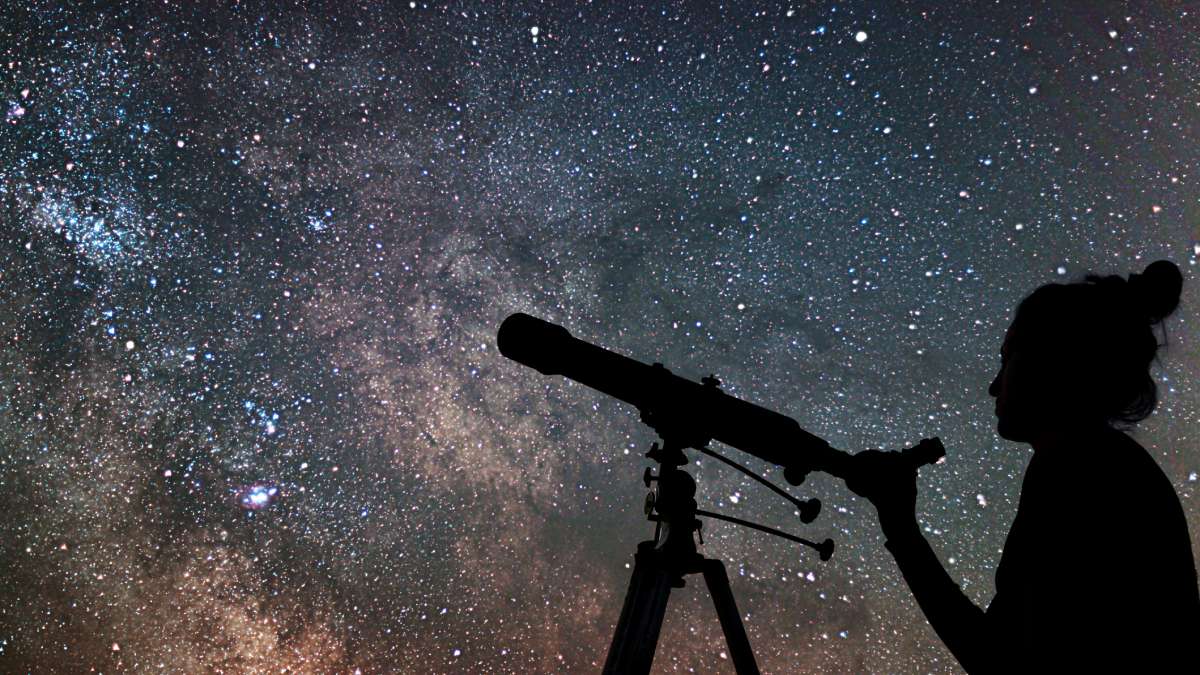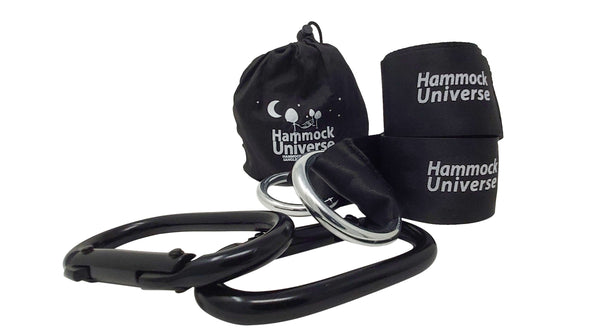FREE SHIPPING on most orders $25+ HAMMOCK BUYING GUIDE
Menu
-
-
Hammocks
-
Hammock Stands
-
Hammocks with Stands
-
Hanging Hammock Chairs
- View all Hammock Chairs
- Brazilian Style Hammock Chairs
- Colombian Hammock Chairs
- Mayan Hammock Chairs
- Mayan Hammock Chairs Deluxe
- Universal Hammock Chair Stand
- U Hammock Chair Stand
- Brazilian Hammock Chair with Universal Chair Stand
- Colombian Hammock Chair with Universal Chair Stand
- Mayan Hammock Chair with Universal Chair Stand
- Mayan Hammock Chair Deluxe with Universal Stand
-
Accessories
- Gift Cards
- Tools and Guides
- Bargain Bin
-
- 1-800-207-4761
- Login

FREE SHIPPING on most orders $25+ HAMMOCK BUYING GUIDE
Tips for The Best Stargazing
February 24, 2023 9 min read

What You'll Need To Have The Best Night
Do you look for fun activities to do outdoors? If yes, you've got to give stargazing a go! Whether you're an experienced astronomer or simply love gazing at the night sky, there are a few tips and tricks you can use to make your stargazing experience even more special. In this article, we'll share some of the best tips for the ultimate stargazing adventure.
What is Stargazing
Everyone's heard of stargazing but it involves more than just staring into the night sky.
Stargazing is the practice of observing the night sky, including stars, planets, and other celestial objects. Throughout centuries, this activity has captivated humans for thousands of years, inspiring stories, myths, and legends.
Whether done with the naked eye or with the help of telescopes, binoculars, or other equipment, stargazing is a fun activity for everyone. You'll get to marvel at the beauty and vastness of the universe and also learn about astronomy and the scientific principles behind the celestial objects you observe.
But, before you get too excited, it's always good to be prepared and do a little research on what you'll be spying. Another thing about stargazing is you've got to pick a good time to go.
When is The Best Time To Go?
When it comes to stargazing, timing is of the essence.
The best time to go stargazing is during a clear night when there is little to no cloud cover and minimal light pollution. This means that you should try to avoid nights with a full moon or when there are major events that might cause light pollution in your area. For example, going stargazing on a night when there are fireworks isn't your best bet.
Generally, the best time to go stargazing is during the late summer and early fall months, when the weather is mild and the nights are longer.
Now that's not to say that's the only time you can go. Stargazing can be done year-round, and each season has its unique celestial objects to spot. Just remember that you've got to plan for stargazing. You can't just do it at the drop of a hat, especially if you want to make the most out of your experience.
So, be sure to check the weather forecast and the moon phase before heading out to stargaze.
What Tools Will You Need
Stargazing can be done with the naked eye, but using some equipment can help enhance your viewing experience. A pair of binoculars or a telescope can make celestial objects appear clearer and larger, making it easier to see details that are not visible to the naked eye.
Binoculars
Binoculars are a great tool for stargazing, especially for beginners. They are easy to use, relatively inexpensive, and provide a wider field of view than telescopes, making it easier to locate and track celestial objects in the sky.
They also have the added benefit of being portable and lightweight, making them ideal for outdoor activities such as camping or hiking. When choosing binoculars for stargazing, there are a few things to consider.
It’s important to choose binoculars with high magnification, preferably 7x or higher. This lets you see celestial objects in more detail and makes it easier to pick out individual stars in a cluster or galaxy. Next, you've got to consider the aperture size, meaning the diameter of the objective lens.
So, the larger the aperture size, the larger amount of light that enters the binoculars, providing a brighter and clearer image. For stargazing, you're going to want binoculars with an aperture size of at least 50mm.
Also, remember to consider the weight and size of the binoculars. You want to choose a pair that is lightweight and compact, making it easy to carry and use in the field. However, you also want to make sure they are durable enough to withstand outdoor conditions and last for years to come. They are an investment after all!
Telescope
Next up are Telescopes! They are another popular tool for stargazing and provide a more detailed view of celestial objects than binoculars.
Telescopes are usually a top pick for advanced stargazers who want to observe the moon, planets, stars, and other deep-space objects in more detail. Although they are different, like binoculars, considering the aperture size is key.
Telescopes with a larger aperture also have a higher magnification power, making it easier to see objects in greater detail. But that oftentimes means they are heavier and thus more expensive.
Aside from the aperture, you've got to think about which kind of telescope you want. Refractor telescopes use lenses to gather and focus light, while reflector telescopes use mirrors. Each type has its benefits and drawbacks, but reflector telescopes tend to be more affordable and easier to maintain, while refractor telescopes are generally better for viewing planets and other bright objects.
Whether you're new to stargazing or a seasoned professional, it’s important to consider factors such as portability, ease of use, and quality. You want to choose a telescope that is easy to set up and use, especially if you’re a beginner. You also want to choose a telescope that provides good-quality images.
Telescopes can be more expensive than binoculars, but they are a worthwhile investment for those who are serious about stargazing.
Stars and Constellations To Spot
When you're out stargazing, it's important to know what to look for in the sky. There are countless stars and constellations to observe, each with its unique beauty and significance.
Here are a few stars and constellations that are especially interesting to spot:
-
Orion: One of the most recognizable constellations, Orion is visible in the winter months and is known for its distinctive "belt" of three stars in a row.
-
The Big Dipper: Also known as Ursa Major, the Big Dipper is a well-known group of seven stars that are visible year-round in the Northern Hemisphere.
-
The Pleiades: Also known as the Seven Sisters, the Pleiades is a star cluster that is visible in the winter months. It's known for its distinctive blue color and is often used as a guide for stargazing.
-
The North Star: Also known as Polaris, the North Star is the brightest star in the Little Dipper constellation and is used for navigation by finding due north.
These are just a few examples of the many stars and constellations to spot when stargazing.
Zodiac Signs
You can also observe the zodiac signs in the night sky. The zodiac is a band of twelve constellations that the sun passes through over the course of a year. Each zodiac sign has its own unique characteristics and symbolism. Here are a few zodiac signs that you can spot when stargazing:
-
Aries: This zodiac sign is associated with the Ram and is visible in the spring months. It can be found by looking for a group of stars that resemble a "V" shape.
-
Leo: This zodiac sign is associated with the Lion and is visible in the summer months. It can be found by looking for a group of stars that resemble a backwards question mark, known as the "Sickle".
-
Scorpio: This zodiac sign is associated with the Scorpion and is visible in the fall months. It can be found by looking for a group of stars that resemble a "J" shape.
So if you're into astrology, then spotting the zodiac signs in the night sky would be a great place to start your stargazing experience.
Planets
If you've already had a look at constellations and zodiacs, then gazing at planets could be for you!
Here are a few planets that you can observe with the naked eye:
-
Venus: This planet is often called the "Morning Star" or "Evening Star" because it's one of the brightest objects in the sky. Venus is visible in the morning and evening and can be found near the horizon.
-
Mars: This planet is known for its distinctive red color and is visible in the night sky. It can be found by looking for a reddish, star-like object.
-
Jupiter: This planet is the largest in our solar system and is known for its distinctive bands of color. It's visible in the night sky and can be found by looking for a bright object that doesn't twinkle.
-
Saturn: This planet is known for its iconic rings and is visible in the night sky. It can be found by looking for a yellowish, star-like object.
Observing planets can be a thrilling experience, especially knowing they are millions of miles away. You can even use a telescope to get a closer look and observe the unique features of each planet.
Just remember to do some research beforehand to ensure you're observing the planets at the right time and in the right location in the sky.
Shooting Stars
Shooting stars, also known as meteor showers, are one of the most exciting events you can witness when stargazing.
A meteor is a small rock or particle that enters Earth's atmosphere and burns up, creating a bright streak of light in the sky. Meteor showers occur when Earth passes through the debris left behind by a comet.
There are several meteor showers that occur throughout the year, and you can check online to find out when and where they will occur. The Perseid meteor shower in August and the Geminid meteor shower in December are two of the most well-known meteor showers.
To observe shooting stars, you don't need any special equipment or tools. Simply find a dark location away from city lights, lie down on a blanket, and look up at the sky.
It's best to give your eyes at least 20-30 minutes to adjust to the darkness and try to avoid looking at your phone or any other bright lights that can affect your night vision.
The Milky Way
The Milky Way is the galaxy we live in and is home to billions of stars. When stargazing, the Milky Way can be a breathtaking sight to behold. It appears as a luminous, hazy band of light stretching across the night sky.
To observe the Milky Way, you'll need to find a location with minimal light pollution. You can check online to find dark sky locations near you. Once you've found a suitable location, allow your eyes to adjust to the darkness for at least 20-30 minutes.
Then, settle down in a chair or your hammock and look up at the sky and try to locate the band of light stretching across the sky.
Observing the Milky Way can be a humbling experience that puts our place in the universe into perspective. It's a reminder of the vastness and beauty of the cosmos. So, take a moment to appreciate the wonder of the galaxy we call home.
Prep Tips
Before heading out for a night of stargazing, there are a few things you can do to ensure a more enjoyable experience. Now that you know what equipment you might need and what to look for, these tips will help you plan for the best possible stargazing experience.
Check For Clear Skies
Checking for clear skies is one of the most important things you can do before heading out for a night of stargazing.
Clouds can obstruct your view of the stars and ruin the experience. To check for clear skies, you can use a weather app or website, or simply look up at the sky before heading out. If there are a lot of clouds or the sky is overcast, it may be best to reschedule for another night.
By taking the time to check for clear skies, you'll increase your chances of having a memorable stargazing experience.
Ditch The City
Light pollution is a stick in the mud for stargazing in urban areas. The bright lights of the city can drown out the faint light of the stars and make it difficult to see anything. That's why it's important to find a location away from the city when stargazing. Even a short drive to a nearby park or rural area can make a big difference in the visibility of the night sky. So, pack up your gear, hop in the car, and head out of the city for a more rewarding stargazing experience.
Set Up A Comfy Spot
Setting up a comfortable spot is an essential part of a successful stargazing trip. Finding a good vantage point with a clear view of the sky is important, but it's also crucial to have a comfortable spot to sit or lie down.
Bringing a blanket, a camping chair, or even a hammock can make a huge difference in your stargazing experience. A hammock, in particular, can be a great option for stargazing because it allows you to lie back and take in the entire sky.
Plus, it's easy to set up and can be hung between two trees or even on a portable stand. With a comfy spot to relax in, you'll be able to stargaze for hours without getting uncomfortable.
The Takeaway
Stargazing is a rewarding experience, but it takes a bit of prep and planning to do it right. By following these tips, you'll be well on your way to having the best stargazing experience possible.
Whether you're a seasoned astronomer or a newbie to stargazing, the wonders of the night sky are waiting to be discovered. And for stargazing, being comfy is key so make sure to contact us for our top hammock picks! Now, grab your gear, find a dark spot, and look up at the stars for a night you'll never forget!
Related Products
Want to relax?
Join for exclusive content and promotions we only give to our email list!




